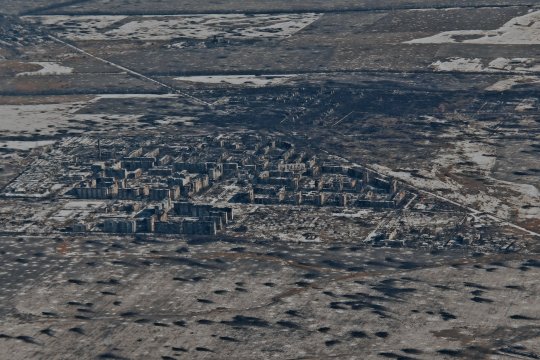#vuhledar
Video
Vuhledar, Ukraine
Russian war crimes that never end.
#ukraine#vuhledar#russia#russian war on ukraine#russian war crimes#russian terrorism#russian terrorists#death#death and dying#death and destruction#cities in dust#war#world at war#donetsk oblast#sad
87 notes
·
View notes
Photo
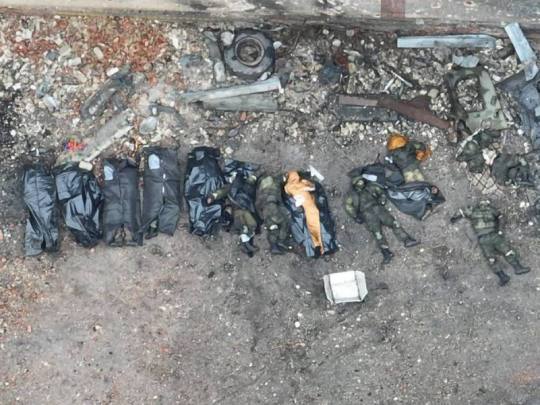
Dead Russian troops were neatly packed in black bags and prepared to be sent home near Vuhledar, Ukraine, 2023. Source: russoldat.info
P.S. According to Putler's plan, the "demilitarization" of the Russian army in Ukraine continues successfully...At present the attack launched by the Russians is costing them at least two battalions lost every day….Russian society is so stupid that no one even asks Putler why so many die and are maimed every day during absolutely stupid invasion and expensive war against small neighbor.
#Ukraine#russian invasion#russian defeat#Vuhledar#russian losses#opressive regime#russian attack on europe#ukrainian independence war#european history#putler
14 notes
·
View notes
Link
Jolly good! 🇬🇧
Ukraine will receive twice as many Challenger 2 tanks from the UK than London originally promised.
Source: Vadym Prystaiko, Ambassador of Ukraine to the United Kingdom, in an interview with Radio Liberty
According to Prystaiko, the UK promised Ukraine 14 Challenger 2 tanks, but following the results of President Volodymyr Zelenskyy's visit to Britain in February, it was agreed that this number would double.
President Zelenskyy obviously made a good impression during his visit to the UK.
These advanced tanks will be put to good use as Russia has inferior tanks and doesn’t know how to use them properly anyway.
Putin's army can't figure out how to use tanks, and the battlefield in Ukraine is littered with burnt wrecks
Russia's tanks were once seen as fearsome, formidable threats, but the war in Ukraine shows it doesn't know how to use them.
The Russian tank force has taken a beating. US officials have said on more than one occasion that Russia has likely lost as many as half its main battle tanks while fighting in Ukraine, if not more.
[ ... ]
Russia's staggering tank losses — which include the T-72, T-64, T-80, and T-90 tanks — can be attributed to its failure to provide adequate fire support in combat, military experts told Insider. The Russian tank force has also shown extremely little adaptability and common sense.
Some parts of Ukraine are cluttered with destroyed Russian tanks.
While much media attention lately has been devoted to fighting in the area around Bakhmut, Ukraine has been winning a major tank battle at Vuhledar.
This is footage from Vuhledar which features a Russian describing his unit’s rout in less than polite terms.
youtube
#invasion of ukraine#stand with ukraine#uk doubles number of challenger tanks going to ukraine#challenger 2#main battle tanks#tank battle#vuhledar#russian defeat#russian military incompetence#vadym prystaiko#бездарная армия россии#Вадим Пристайко#велика британія#танки#вугледар#россия проигрывает войну#владимир путин#путин хуйло#путин – это лжедмитрий iv а не пётр великий#это ВОЙНА а не 'спецоперация'#вторгнення оркостану в україну#геть з україни#україна переможе#будь сміливим як україна#слава україні!#героям слава!
9 notes
·
View notes
Text
TLDR: it was a meat grinder for russians
3 notes
·
View notes
Text
Воїни Збройних Сил України боронять місто Вугледар від рашистських загарбників
Warriors of the Armed Forces of Ukraine are defending the city of Vuhledar (Donetsk region) from russian nazis.
Як відбили наступ росіян на Вугледар показали бійці 72 ОМБр – новини на УНН
https://www.unn.com.ua/uk/news/2054002-yak-vidbili-nastup-rosiyan-na-vugledar-pokazali-biytsi-72-ombr
Їхали, та не доїхали: у Генштабі показали спалену ворожу бронетехніку –…

View On WordPress
#Armed Forces of Ukraine#Donetsk region#Вугледар#Донеччина#ЗСУ#Збройні Сили України#Російське вторгнення в Україну#Російсько-українська війна#Vuhledar
1 note
·
View note
Quote
We destroyed a lot of Russian equipment,” he said. “What they did wrong was come to Ukraine.
Ukrainian tank commander Private Hrebonok, near Vuhledar.
https://www.nytimes.com/2023/03/01/world/europe/ukraine-russia-tanks.html
0 notes
Text
Ucraina: la Russia raddoppia le navi da guerra sul Mar Nero. Infuria la battaglia a Vuhledar
"Nel Mar Nero, la flotta di navi da guerra è raddoppiata rispetto a giovedì: ora ci sono otto navi", ha detto il comando militare nella regione meridionale dell'Ucraina e "ciò potrebbe indicare che sono in preparazione attacchi missilistici e attacchi di droni", ha aggiunto il comando
#Ucraina: la Russia raddoppia le navi da guerra sul Mar Nero. Infuria la battaglia a Vuhledar News |
0 notes
Video
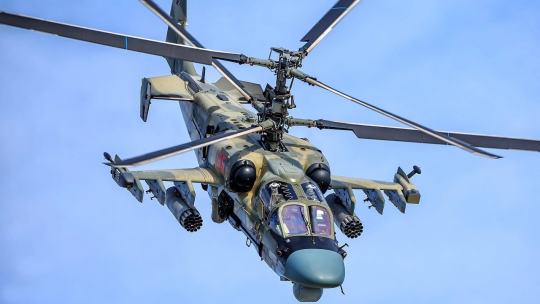
Scrap Metal
The wreckage of a Russian Ka-52 attack helicopter that was shot down in the vicinity of Vuhledar, Donetsk Oblast.
#ukraine#vuhledar#russia#russian war on ukraine#helicopter#ka-52 attack helicopter#russian helicopter shot down#war#world at war#weapons
27 notes
·
View notes
Photo
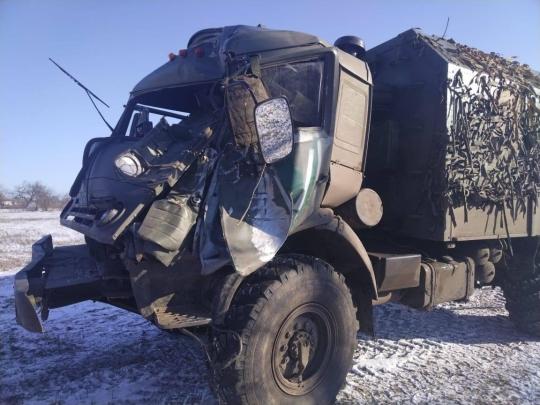
Destroyed Russian KAMAZ 4x4 military truck, Vuhledar, Ukraine, 2023. Source: ukr.warspotting.net
#Ukraine#russian invasion#Vuhledar#KAMAZ#military truck#russian attack on europe#russian losses#winter#rural landscape#ukrainian independence war#defense of liberty#military history
7 notes
·
View notes
Link
19 notes
·
View notes
Video
youtube
Pavlivka And Vuhledar Attacked Fiercely #pavlivka #vuhledar #donetsk #e...
#youtube#Pavlivka And Vuhledar Attacked Fiercely. pavlivka vuhledar donetsk eu europe border donbas kherson crimea Pavlivka and Vuhledar have been a
0 notes
Text

Mykhayl Shulha, center, cries next to the coffin of his sister Sofia Shulha during a funeral prayer in Uman, central Ukraine, Sunday, April 30, 2023. Sofia Shulha, 11, and Kyrylo Pysarev, 17, were killed during a Russian attack on a residential building early Friday morning. (AP Photo/Bernat Armangue)
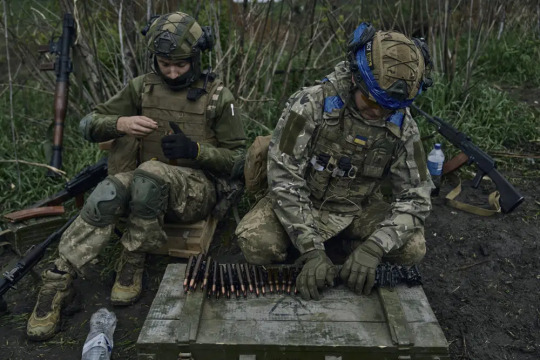
Ukrainian soldiers prepare their ammunition at the frontline positions near Vuhledar, Donetsk region, Ukraine, Monday, May 1, 2023. (AP Photo/Libkos)

An aerial view shows a residential building heavily damaged by a Russian missile in the town of Uman, Cherkasy region, Ukraine, Friday, April 28, 2023. (REUTERS/Yan Dobronosov)

Ukrainian soldiers rest in a shelter at the frontline positions near Vuhledar, Donetsk region, Ukraine, Sunday, April 30, 2023. (AP Photo/Libkos)

Ivanna Sanina reacts as she holds a Ukrainian national flag and a portrait of her boyfriend Christopher Campbell, U.S. military volunteer of the International Legion for the Defense of Ukraine, who was killed in a fight against Russian troops in the frontline town of Bakhmut, during his funeral in Kyiv, Ukraine, Friday, May 5, 2023. (REUTERS/Valentyn Ogirenko)

Ukrainian service members ride atop of a BMP-2 armoured fighting vehicle near a front line, amid Russia's attack on Ukraine, in Donetsk region, Ukraine, Wednesday, May 3, 2023. (REUTERS/Sofiia Gatilova)
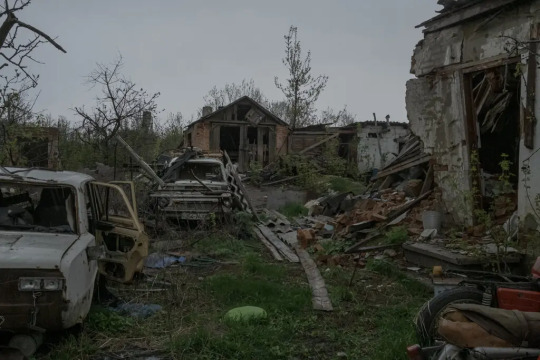
A destroyed home in the small village of Peremoha, in Kharkiv region, in northeast Ukraine, on Saturday, April 22, 2023. (Mauricio Lima/The New York Times)
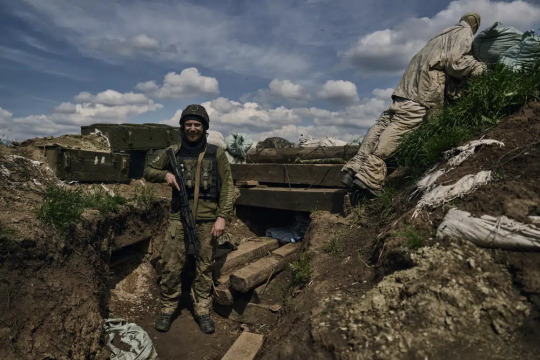
A Ukrainian soldier smiles standing in a trench on the frontline in the village of New York, Donetsk region, Ukraine, Monday, April 24, 2023. (AP Photo/Libkos)

A worker uses a remote control to operate a demining machine, created by local farmer Oleksandr Kryvtsov with his tractor and armoured plates from destroyed Russian military vehicles, in an agricultural field near the village of Hrakove, in Kharkiv region, Ukraine, Tuesday, May 2, 2023. (REUTERS/Vitalii Hnidyi)

Ukrainian soldiers kneeling as the caskets of their fallen comrades, Vladyslav Posia, 23, and Sergiy Ostapenko, 37, both of whom were killed by shrapnel during fighting in the eastern Donetsk region, are carried during their funerals at Boryspil in the Kyiv region, on Sunday, April 23, 2023. (Finbarr O'Reilly/The New York Times)
246 notes
·
View notes
Text
Russian forces appear to have constructed a 30-kilometer-long barrier dubbed the “tsar train” in occupied Donetsk Oblast, possibly to serve as a defensive line against future Ukrainian assaults. Satellite imagery dated May 10, 2023, and February 6 and 10, 2024 shows that Russian forces constructed a long line of train cars stretching from occupied Olenivka (south of Donetsk City) to Volnovakha (southeast of Vuhledar and north of Mariupol) over the past nine months. A Ukrainian source reported on February 11 that Russian forces have assembled more than 2,100 freight cars into a 30-kilometer-long train. The source reported that Russian forces began assembling the train in July 2023 and suggested that Russian forces intend to use the train as a defensive line against future Ukrainian assaults. The railway line between Olenivka and Volnovakha is roughly six kilometers from ISW’s current assessed frontline southeast of Novomykhailivka at its closest point and is in an area of the front that was relatively inactive when Russian forces reportedly began construction. Russian forces have recently made marginal territorial gains in this area. The Russians could have assembled the train for other purposes as well.
loving whatever this is
20 notes
·
View notes
Text
Gen. Valery Zaluzhny, commander-in-chief of the Ukrainian Armed Forces, recently painted a somber picture of Russia’s war against Ukraine: A positional war teetering on the precipice of a stalemate, slowly tilting in Russia’s favor. Against this backdrop, talk of war fatigue is gaining momentum in Western capitals and the media, with growing calls for negotiations between Russia and Ukraine.
A year ago, Zaluzhny had underscored the need for specific weapons to achieve a breakthrough in the next Ukrainian counteroffensive. His prerequisites included air defense systems, fighter aircraft, main battle tanks, infantry fighting vehicles, howitzers, and long-range missiles to strike Russian facilities and supply lines well beyond the 50-mile range of previously delivered systems. “I know that I can beat this enemy,” Zaluzhny told the Economist then. “But I need resources!” But Western support, in both types and quantities of weapons, fell significantly short of his appeals.
Western reluctance to promptly furnish Ukraine with the required military equipment in sufficient numbers—exacerbated by ongoing shortages in artillery ammunition—inadvertently afforded Russia the time to strengthen its frontline through extensive construction of fortifications, trenches, and mine fields. Notably, the United States held back on the delivery of Advanced Tactical Missile Systems until very recently, while German reluctance to provide Ukraine with Taurus missiles added another layer of hesitation. The results are evident on the ground: Whereas we cannot know whether greater and faster delivery of weapons would have led to a Ukrainian military breakthrough, we do know that, without it, the result of Ukraine’s counteroffensive in the land war has been marginal at best. In the Black Sea, on the other hand, Kyiv has achieved significant recent success.
Doubling down on the narrative that it has thwarted Ukraine’s counteroffensive, Russia has launched attacks in several sectors of the front, including near the city of Avdiivka and town of Vuhledar. While they are exacting a significant toll on Russian lives and military resources—October was the bloodiest month for Russia since February 2022—Russian advances are paying off. The strategic value of Russia’s small territorial wins is questionable, but the benefits in the informational realm are clear: They give many observers the impression that the military initiative is back in Moscow’s hands. Alongside the lackluster Ukrainian counteroffensive, the fear that the tables are turning in Russia’s favor is adding to the war fatigue among Western nations and eliciting calls for negotiations.
The West has indeed reached the limits of its current strategy. In practice, if not in words, this strategy has centered on ensuring Ukraine’s survival without enabling it to achieve a decisive victory. Ukraine’s Western supporters are now at a crossroads.
Some believe that there are only two routes ahead: either the perpetuation of war—with the risk that it tilts in Russia’s favor—or negotiations that lead to some form of territorial compromise. Yet reality in Ukraine—and, above all, in Russia—suggests that the negotiation option is not available. Ukrainians believe that Russian President Vladimir Putin’s ambitions reach beyond the annexation of a few regions and instead extend to the genocidal subjugation and erasure of their country and identity. For Ukrainians, the stakes extend beyond affirming an abstract principle of territorial integrity; their concern is about the lives of their compatriots living under Russian occupation. Framing negotiations around a land-for-peace compromise is untenable for Ukrainians.
Those in the West who believe in negotiations might retort that whether Kyiv desires to negotiate is irrelevant—without Western support, it will have no other choice. But as is often the case in Western discussions about Ukraine, this tends to ignore the other side of the equation: Russia. Those advocating for negotiations assume that Putin will acknowledge that he cannot achieve an outright victory and settle for the territorial gains he has made so far. However, the idea that Putin will genuinely embrace negotiations and seek an end to the war overlooks the strategic role the war itself has gained in sustaining his grip on power, especially as his narrative of the war has evolved over the last two years. The reconfiguration of the war in Russian propaganda, from a preventive attack against supposed Ukrainian Nazis to a patriotic war to defend the Russian homeland against attack by the collective West, means that the show must go on.
Putin’s need for a large-scale war arose between 2018 and 2020, when the political momentum from the annexation of Crimea dwindled and Russia grappled with a myriad of domestic challenges. The 2018 pension reforms sparked street protests and a sharp decline in Putin’s approval ratings. The years 2019 and 2020 were marked by widespread anti-government protests in Moscow and the Khabarovsk Krai region. The political and social environment, already tense, was further strained by the COVID-19 pandemic and its economic repercussions. The poisoning of opposition leader Alexei Navalny and his subsequent imprisonment, coupled with restrictions on civil liberties through legislation that curtailed supposed foreign agents and undesired organizations, added to the tension. It is in this tumultuous period that Putin released his infamous article on the national unity of Russians and Ukrainians, which proved to be the ideological and argumentative prelude to war. Bringing the war to an end now would mean having to address not only a host of festering issues, but also fresh problems arising domestically from Western sanctions and Russia’s large-scale invasion of Ukraine. Putin has nothing to gain from any of this.
The choice facing the West is not between war and compromise but between defeat and victory. The trajectory the West is on—maintaining current levels of support or perhaps scaling them back while pushing for negotiations—raises the chances of defeat. Putin is banking on this: At the heart of his theory of victory lies his conviction that Russia’s staying power in the war is greater than the West’s (and, by extension, Ukraine’s). Unlike the West’s muddled hope for compromise, Putin’s strategy has a clear logic.
At the current crossroads, Ukraine’s Western supporters should ask themselves: What are the costs of a step change to enable Ukraine’s victory relative to the costs of maintaining the status quo or scaling back support leading to Ukraine’s defeat? Such a defeat, to be clear, would not be limited to Ukraine. A victorious Russia would not limit itself to occupying the five annexed regions and, through them, politically influencing or controlling Kyiv. While some may think that a militarily and economically degraded Russia no longer poses an existential threat to Poland or the Baltic states, a victorious Russia would certainly pose such threat to Moldova. No one can know what could happen next—or after a vindicated Russia rearms. No reasonable European country can afford to take that bet, and no reasonable U.S. administration should take that bet either.
Of course, ensuring Ukraine’s victory comes with costs, too. The economic cost of sustaining Ukraine to victory��involving not only weapons but also many other forms of aid—is significant, especially in the context of other challenges faced by the West in the Middle East and elsewhere. A victorious Ukraine emerging from years of war would pose significant challenges, and its integration in Euro-Atlantic structures would not be smooth. But surely the West would much rather deal with these problems than the much more existential ones that would result from Ukraine’s defeat.
30 notes
·
View notes
